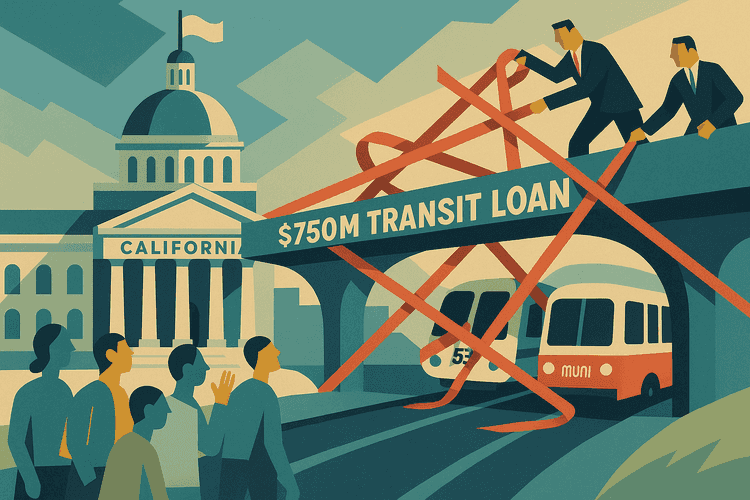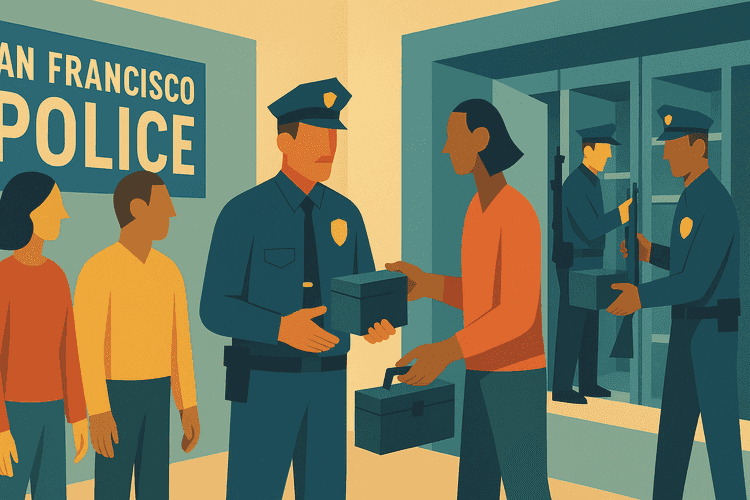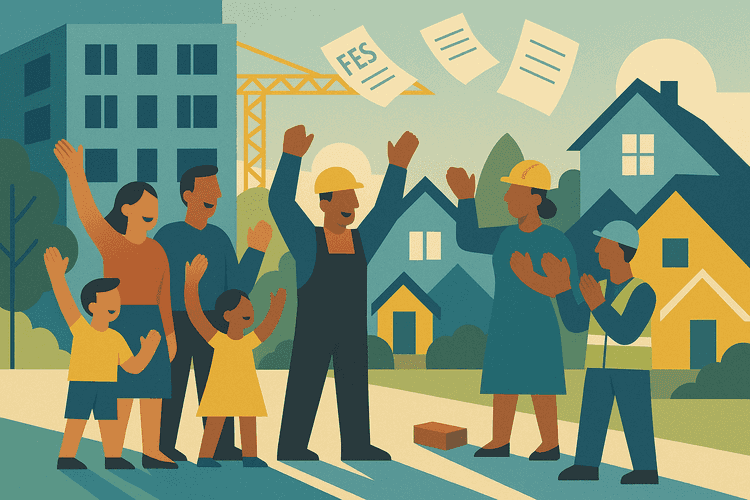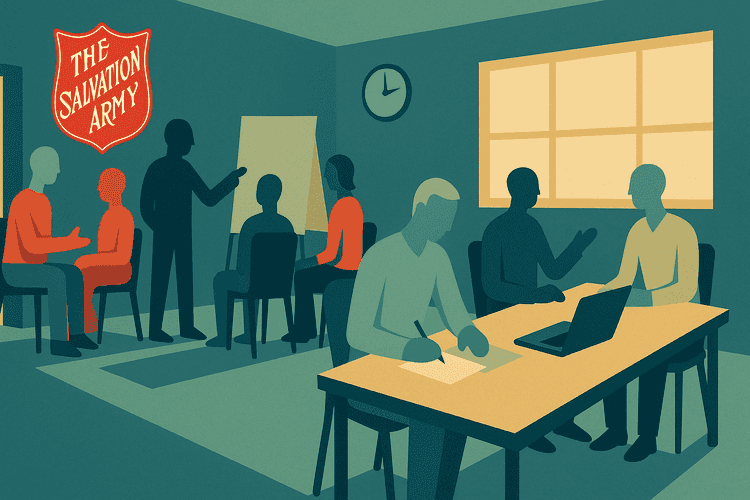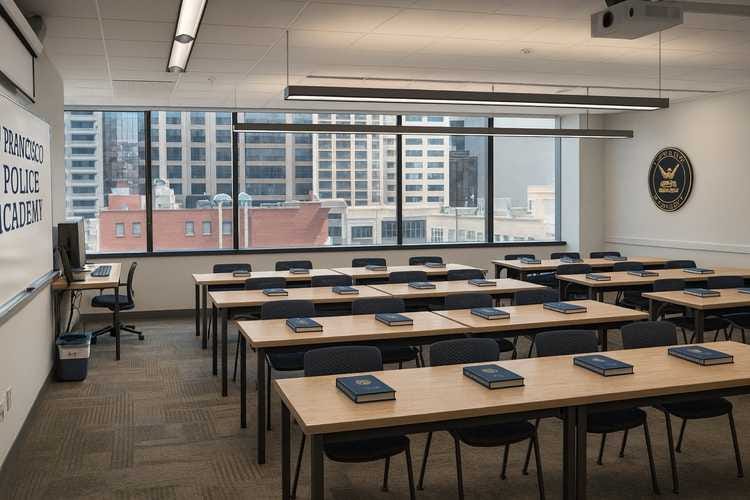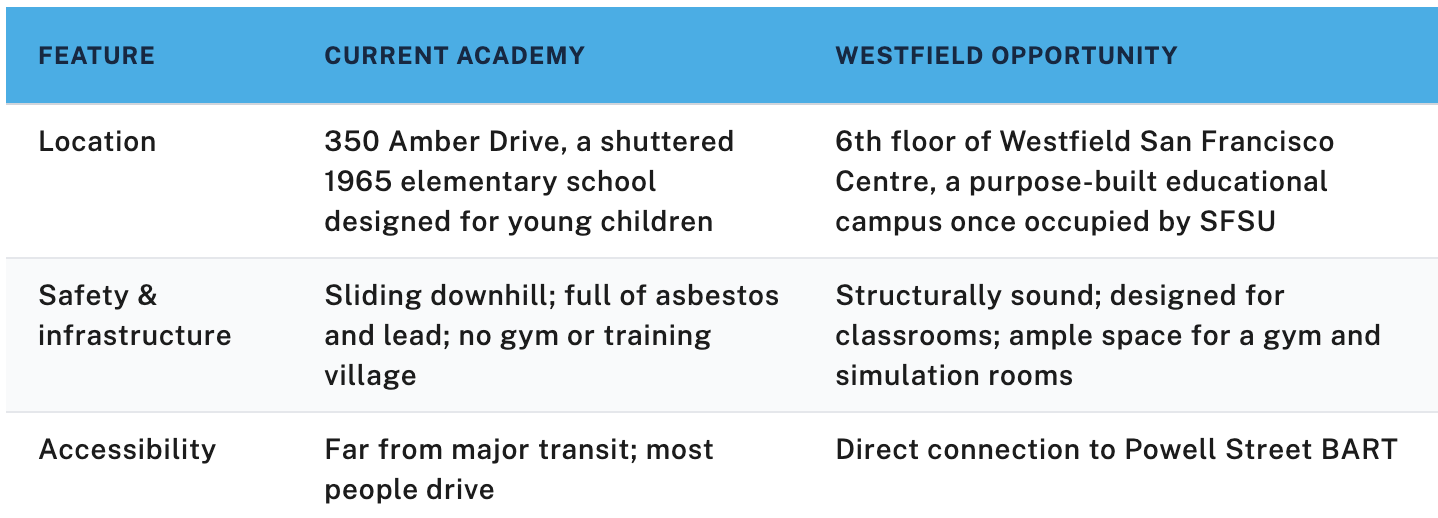Planning Commission Approves Family Zoning Plan
PLUS: $750M Transit Loan Revived
What You Need To Know
Here’s what happened around the city for the week of September 7, 2025:
- Planning Commission Approves Family Zoning Plan
- $750M Transit Loan Revived
- SF Launches First-in-Nation Gun Storage Program
- Supervisor Mahmood Proposes Housing Fee Reform
- First Sober Shelter Opens
Recent & upcoming openings:
- Bosco brings new life to Bellota space
Research:
- Why the 6th floor of the Westfield is the perfect place for a new police academy
Planning Commission Approves Family Zoning Plan
Published September 12, 2025
The Facts
San Francisco's Planning Commission approved Mayor Daniel Lurie's Family Zoning Plan on September 11, 2025, advancing the comprehensive zoning reform to the Board of Supervisors. The 4-3 vote came after eight hours of public comment. Thank you to all of the nearly 400 people who sent an email in support!
All four of the Mayor-nominated commissioners voted in favor. All three of the Board-appointed commissioners voted against, opting for the city to violate state law and inviting the state to take over local land use decisions.
The modest and popular plan creates capacity for approximately 36,000 new homes to help San Francisco meet its state mandate of permitting 82,069 homes by 2031.
The Context
The approval is a major milestone, coming just two days after the plan received preliminary validation from the state. California's housing department confirmed the plan substantially complies with state law, providing legal protection against potential challenges.
Despite opposition from a very small but loud minority, July 2025 polling found 74% of San Francisco voters support the Family Zoning Plan. Prior to the hearing, pro-growth and pro-housing supporters appeared alongside Mayor Lurie to rally support, while former Supervisor Aaron Peskin donned a NIMBY anti-housing costume.
Under current zoning, apartments are illegal across over 70% of San Francisco. The Family Zoning Plan would reduce that to near zero.
The GrowSF Take
NIMBY no more - San Francisco is finally embracing sensible zoning reform. A new generation of advocates and political leaders are showing that the old way of doing things is over.
The support of 74% of voters shows San Franciscans want more homes, not more bureaucratic delays. The Board of Supervisors now faces a clear choice: embrace evidence-based housing policy or obstruct solutions that thousands of families desperately need, violating state law and risking state intervention along the way.
There's really only one choice left: say Yes to more homes.
$750M Transit Loan Revived
Published September 12, 2025
The Facts
A $750 million loan from the state to prevent devastating Bay Area transit cuts has been revived after a week of intense advocacy. Governor Newsom announced the reversal on September 10, after his Department of Finance had blocked the deal just days earlier.
The loan was approved in the June state budget to help BART, Muni, and other agencies maintain service until voters can approve a funding measure on the November 2026 ballot. Without it, agencies faced a "nightmare scenario" of severe cuts: BART service could be reduced by up to 90% and Muni by 50%, according to Max Harrison-Caldwell and Gabe Greschler at The Standard.
The Context
BART, Muni, and other transit agencies around the Bay Area are facing significant financial challenges due to a combination of factors, including reduced ridership following the COVID-19 pandemic, rising operational costs, and insufficient funding from state and federal sources. The crisis isn't only due to outside factors, however: budgets ballooned during the pandemic from federal relief funds that have now dried up, and agencies didn't make realistic plans to scale back down.
To address the shortfall, agencies have been cutting budgets and reducing service, but rising costs due to soaring inflation have left them far short of sustainable funding. Leaders from across the Bay Area have been working on a ballot measure to raise a 0.05% sales tax dedicated to funding public transit, but that money wouldn't arrive until 2027, if it passes at all. To bridge the financial gap, the Newsom administration promised to extend a $750 million bridge loan secured against future fare revenue. But on Saturday, September 6 the Department of Finance announced that it would not finalize the loan, creating a new crisis. In response, Mayor Lurie engaged in "hourly communication" with Newsom's office and joined Senator Wiener at a Monday rally.
A BART systemwide shutdown the previous Friday offered a preview of the chaos, leaving highways "choked with bumper to bumper traffic," as reported by Jill Tucker at The Chronicle. The loan is a crucial bridge to the 2026 ballot measure, as that revenue would not arrive until 2027.
The GrowSF Take
What a mess. From the start, the Newsom administration has been dragging its feet on this loan, even as transit agencies warned of catastrophic cuts. The Department of Finance's last-minute decision to block the loan was reckless and irresponsible, threatening to plunge the Bay Area into a transit crisis that would have had severe consequences for commuters, the economy, and the environment. But transit agencies are not blameless either: they failed to plan for a realistic post-pandemic future, and now they're scrambling to avoid disaster.
We're thankful that Mayor Lurie, Senator Wiener, and other leaders stepped up to apply intense pressure on the Newsom administration to reverse course. We hope voters will approve funding for transit in 2026, but if not, we may be back in this situation again.
SF Launches First-in-Nation Gun Storage Program
Published September 12, 2025
The Facts
Supervisor Stephen Sherrill and Mayor Daniel Lurie launched Pierce's Pledge Safe Gun Storage Program on September 9, 2025, a first-in-the-nation initiative allowing residents to temporarily store firearms at any of the city's 10 police stations for free for up to one year. The program is designed to provide a safe option for families experiencing volatile situations, such as custody disputes or mental health crises.
The Context
The initiative honors 9-year-old Pierce Hu, who was fatally shot by his father in the Marina district on January 13, 2021, during a volatile custody battle. Interim Chief Paul Yep called the program "meaningful" and emphasized that "securely stored firearms can prevent tragic incidents."
Women in abusive relationships are about 5 times more likely to be killed by their abuser when a gun is present in the home, according to a study of 563 women who experienced domestic violence, published in the American Journal of Public Health.
The GrowSF Take
We hope that this safe gun storage program can prevent future tragedies.
Supervisor Mahmood Proposes Housing Fee Reform
Published September 11, 2025
The Facts
Supervisor Bilal Mahmood, whom we endorsed for election in November 2024, has made a move to lower the financial risks of new home building. Today, home builders must pay tens-to-hundreds of thousands of dollars in "impact fees" before they even start construction, and Mahmood's proposal moves payment of those fees until after the building is complete and certified for occupancy.
The ordinance, introduced on June 10, 2025, and originally scheduled for a Planning Commission hearing on September 11, brings San Francisco into compliance with state law while reducing significant financial risk for housing developers.
The Planning Department recommends approval, noting the change provides "greater flexibility for housing developers and helps reduce financial and administrative burdens."
The Context
The proposal responds to state housing law Senate Bill 937, which took effect on January 1, 2025. San Francisco's impact fees can be substantial—the city's analysis found fees can add $70,000 to $90,000 to projects, and research shows California's municipal fees are 10 to 40 times higher than in states like Texas. Seattle does not charge any impact fees, highlighting how unusually burdensome San Francisco's fees are compared to other major West Coast cities.
Under the current rules, developers risk losing hundreds of thousands of dollars if projects fail after paying fees upfront but before completion. The new system reduces this risk by aligning fee payment with project success. This reform comes as San Francisco struggles with housing production, with construction crashing 70% since 2020 despite the urgent need to permit 82,000 new homes by 2031.
The GrowSF Take
We're beyond pleased to see Supervisor Mahmood taking concrete steps to reduce barriers to new housing. Mahmood is a wonderful departure from his anti-housing predecessor and is proving to be a pragmatic leader who understands that San Francisco's housing crisis demands practical solutions, not ideological posturing.
This smart reform removes an unnecessary financial barrier that discourages new housing. By reducing upfront risk, it makes projects more viable, especially for smaller developers who cannot absorb the loss of paying fees on a project that fails.
First Sober Shelter Opens
Published September 11, 2025
The Facts
San Francisco's first sober homeless shelter is now operational on Sixth Street, operated by the Salvation Army. Hope House opened with 58 beds, offering single adults a drug- and alcohol-free environment for up to one year, reports Maggie Angst at The Chronicle.
Gary Noakes, a 43-year-old recovering from fentanyl and methamphetamine addiction, called Hope House "the best experience thus far" compared to other shelters where he witnessed bunkmates smoking fentanyl, frequent brawls, and bathrooms "strewn with feces and discarded needles". The shelter sets clear expectations: residents must meet with case managers twice weekly, engage in daily activities, and maintain a 9 p.m. curfew, and recovery support groups are offered on-site.
The Context
Hope House is a significant departure from San Francisco's traditional "housing-first" philosophy, which focused only on providing shelter. People in recovery could not even opt in to sober housing, instead they were required to live alongside active drug or alcohol users and risk relapsing.
The facility is a key part of Mayor Lurie's Breaking the Cycle initiative, which also includes two other sober transitional housing sites.
The GrowSF Take
We're glad that people in recovery have a new option for shelter that supports their goals. For years, housing-first activists have ignored the reality that different people need different solutions, and that some people need a drug- and alcohol-free environment to rebuild their lives. We hope that Hope House is just the beginning of a broader shift in how we approach homelessness in San Francisco.
Recent & upcoming openings
A great city is constantly changing and growing, let’s celebrate what’s new!
Bosco brings new life to Bellota space
Bellota brought fantastic paella to hungry San Franciscans for eight years before it closed in August 2024, and while we miss it we’re also excited to welcome a new restaurant to reactivate its old home. Welcome, Bosco, to San Francisco!
Bosco opened on Wednesday, September 10 at 888 Brannan. It’s a new Italian restaurant from the Absinthe Group, the same forces behind Absinthe Brasserie & Bar, Arbor, Arlequin Wine Merchant, and Comstock Saloon, writes Dianne de Guzman at Eater SF. The opening menu features seven types of pasta, wild boar, buckwheat chitarra that’s reminiscent of soba, and pork ribs smoked for five hours in their modified oven. See you there!
Research
Why the 6th floor of the Westfield is the perfect place for a new police academy
Published September 9, 2025
A new home for SFPD training
San Francisco’s police academy is falling apart. We detailed its problems in an earlier post: a crumbling 1960s elementary school on Amber Drive, filled with asbestos, seismically unsafe, with no gym, no mock training village, and too few classrooms. Cadets sometimes take exams sitting on the floor.
But there’s an obvious solution to the crisis: the former San Francisco State Campus at the Westfield mall.
The police need a modern training facility, and downtown needs a tenant. By moving the academy into the mall, we can increase safety downtown, activate Market Street, and boost recruitment with a state-of-the-art training center.
More than an academy: a downtown safety hub with traffic enforcement
Turning Westfield’s upper floors into a police academy could do much more than improve training. Placing a visible public‑safety presence downtown would send a strong signal that the city is serious about reclaiming its core. Major retailers like Nordstrom and Whole Foods left downtown citing unsafe street conditions and a lack of enforcement. Filling vacant space with cadets, trainers, and specialized units would bring new foot traffic and deter crime.
A downtown academy could also serve as a home for the Drug Market Agency Coordination Center and the Hospitality Task Force, both of which lack permanent offices. And relocating the Traffic Company from its facility at 1995 Evans Avenue in the Bayview to a new Jessie Street substation adjacent to Westfield would free up space and centralize traffic enforcement downtown.
With one decision, the city can solve an urgent public‑safety problem and energize a struggling retail core. The sixth floor of Westfield is empty, purpose‑built for education, and waiting to be repurposed. Let’s seize the opportunity to build a modern police academy and a downtown safety hub in one. It’s time we breathe new life into downtown by making our streets cleaner and safer for all.
SFPD is certified to teach others, yet we can’t host them
We have the expertise to train both our own recruits and officers from other agencies in modern, de‑escalation‑focused policing, but we lack the facilities to do so. Despite the shortcomings of our current academy, the San Francisco Police Department is a state‑certified basic training academy. The department’s Crisis Intervention Team (CIT) program has gained national recognition and has been showcased at conferences like the International Association of Chiefs of Police and the Force Science Institute.
But the current academy doesn't have enough classrooms or dedicated training spaces to host larger classes or specialized courses. If San Francisco wants to help set the standard for policing in California, we need a facility that reflects our ambitions. We should be able to invite other departments to our academy and provide them with training.
A vacant solution sits on Westfield’s sixth floor
Fortunately, there’s a ready-made alternative hiding in plain sight: the currently unused sixth floor of the Westfield San Francisco Centre. For years, San Francisco State University ran a downtown campus there but it has since shut down. We visited the space and were blown away by how it could fit the needs of a new SFPD Academy. The campus has large, expandable classrooms clustered around Westfield's glass‑walled atrium.
The mall is directly connected to Powell Street BART via an underground passage, making it easy for recruits from across the Bay Area to attend classes. With an already purpose-built educational facility, there’s plenty of room to carve out a modern academy, simulation environment, and gym while leaving lower floors for retail or office use.
And don't worry - the shooting range won't be relocated here. That will stay at the Lake Merced facility!
Because the space was formerly occupied by a university, it barely needs any remodeling. The space could be functional once the furniture from the current academy is installed. We took some pictures, and here are some examples of the facilities and what they could look like for academy training:
Before
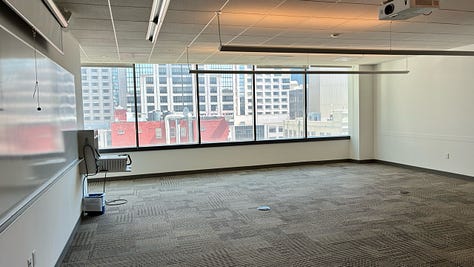
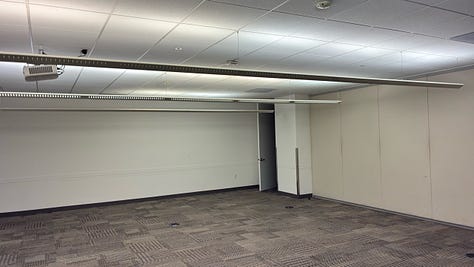
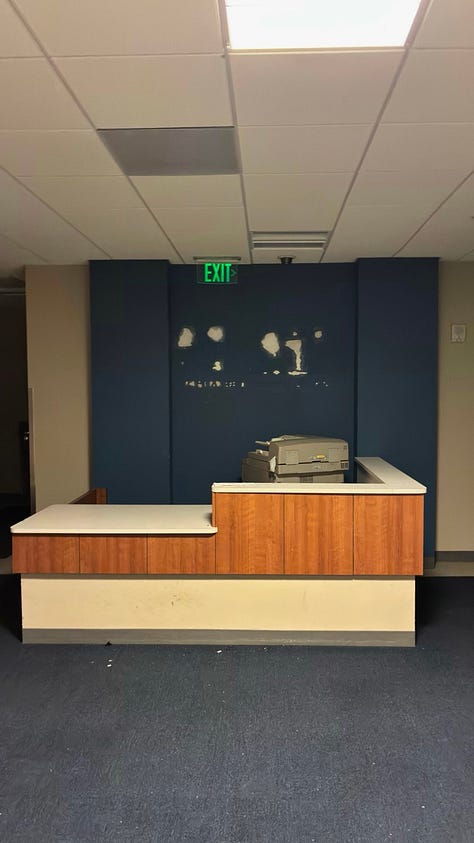
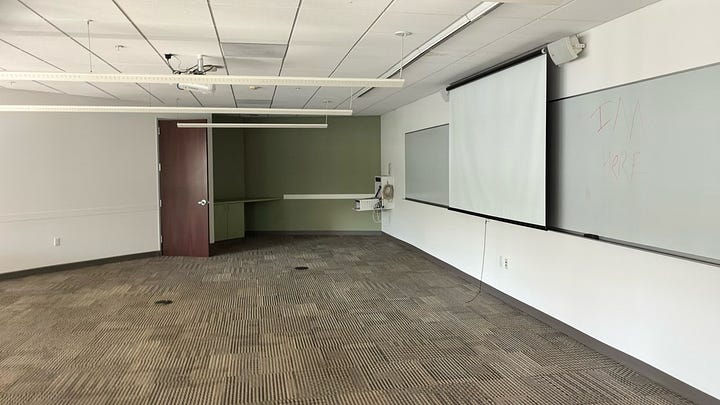
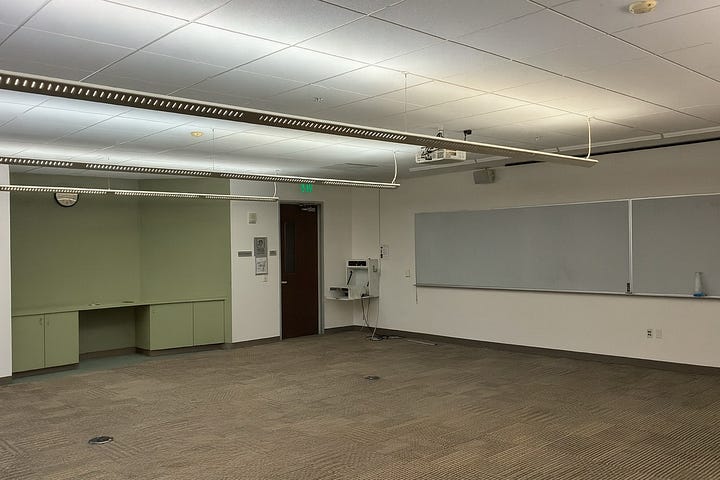
After
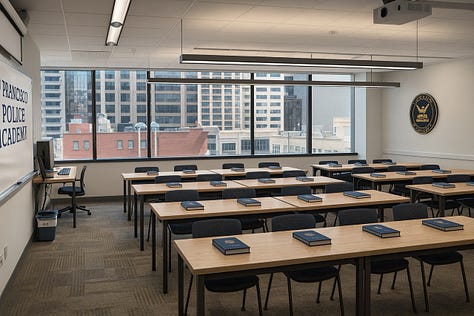
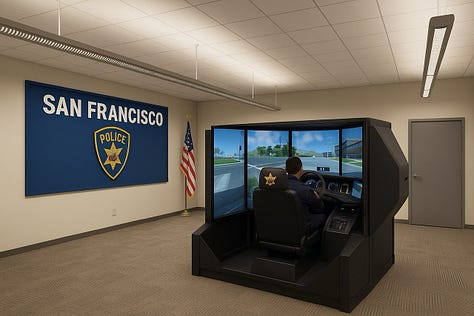
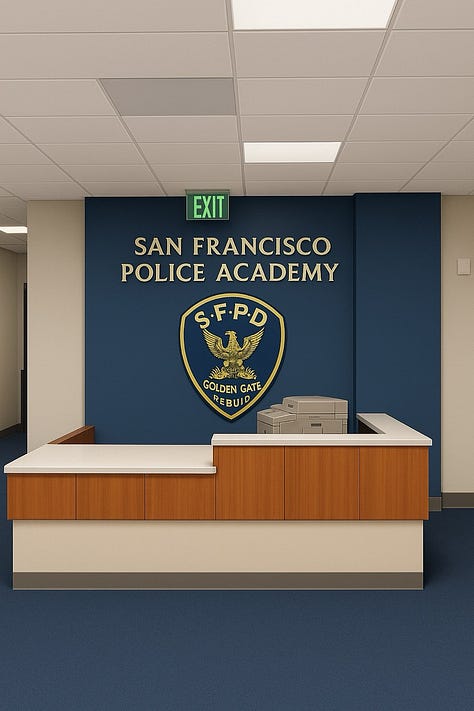
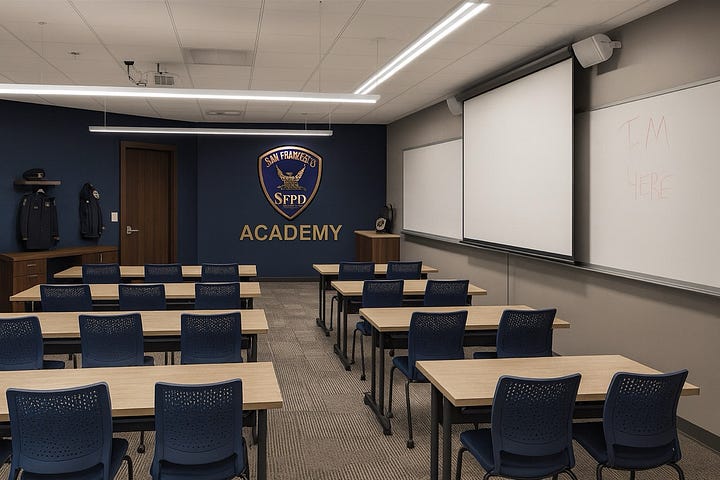
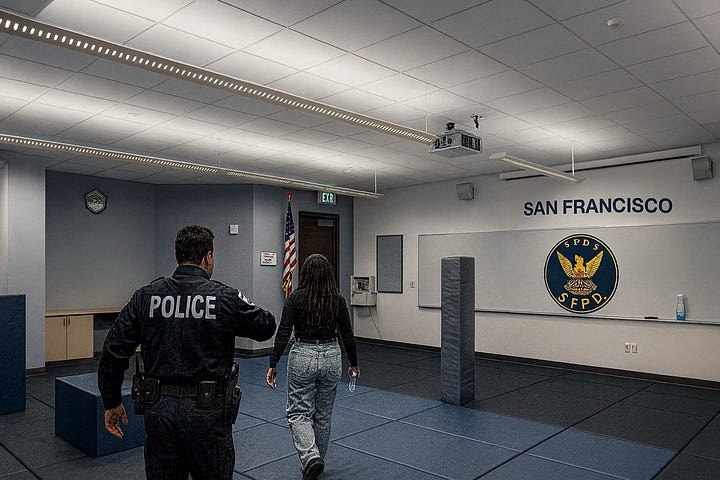
Turning this into a regional training center could make the academy financially self-sustaining
What makes the 6th floor even more attractive is that the academy wouldn’t just be an expense, it could pay for itself. Because it would be certified as a basic training facility, we could charge other police departments for the training services we offer. Alameda already does this, and they generate significant revenue. In our case, the academy could operate as a self-sustaining program, even bringing in extra funds rather than relying solely on the city budget.
What we have vs. what we could have
A move to Westfield would not just fix the academy’s deficiencies; it would make the program more accessible and appealing to recruits from across the region given the connection to BART, as well as make the SFPD Academy a home training facility for other regional agencies.



